America's Cup in chaos - part one
Just when it seemed to be all on track, sailing’s premier event, the America’s Cup, descended into chaos last week following an announcement, outlining some dramatic changes to the event, which aim to slash campaign costs.
The significant change - which seems to be firmer than a ‘proposal’, but slightly short of a ‘done deal’ (with a decision on it expected as early as this week) - would involve replacing the AC62 with a smaller and, allegedly cheaper, foiling cat of a size that can be taken apart and shoe-horned into standard 40ft containers.
This sudden initiative is believed to have been spawned by Larry Ellison and Torbjörn Törnqvist after seeing the footage of their turboed AC45s sparring on San Francisco Bay and hearing about their performance. Both Oracle Team USA and Artemis Racing didn’t simply just add foils to their AC45s, but fully transformed them into ‘mini-AC62s’ with their beam widened, adding a proper cockpit with wheels and pedestals, plus a pod replacing the ‘spine’ system running fore and aft up the middle of the boat, etc. Incredibly the performance of these turboed AC45s proved to be similar to that of the AC72s – during one bear-away the Oracle Team USA turboed AC45 hit 46 knots and allegedly the two boats were regularly hitting 40+ knots in scarily little breeze. (One wonders what a similarly pimped AC62 might do…Paul Larsen, watch out!)
In addition to the Defender and Artemis Racing, the proposal for the smaller boat has received support from Ben Ainslie Racing as well as Team France. For Cammas’ team such a move and its knock-on reduction in required campaign budget would make the difference between being able to compete and not being able to (last summer the French team had more than half its budget secured).
However less positive has been the impressive domino effect the announcement has caused. Moments after ACEA’s announcement, Luna Rossa issued its own statement, to the effect that it did not agree with the proposed change. Although it did not provide its reasons, it is unprecedented in the lengthy history of the America’s Cup for such a fundamental change to be made mid-way through a Cup cycle. It has also wrong-footed the Italian team. Traditionally, following four past challenges, Prada/Luna Rossa has suffered from being slow to crank up its campaigns. Not so this time – the Italians swung into its challenge for the 35th America’s Cup barely missing a beat after the 34th ended. In personnel terms this time around it was up to full strength earliest of all the teams and is probably furthest into its AC62 development.
Luna Rossa’s statement argued that such a profound change to the Protocol for the 35th AC could only be changed by unanimity between the teams and if this were not the case, rather than begin a lengthy court action, the team would simply withdraw from the 35th America’s Cup.
Challenger of Record
One aspect of Luna Rossa’s position might have been interesting - with the retirement of Team Australia as Challenger of Record last July, Luna Rossa, being chronologically the next team to challenge for the 35th America’s Cup, inherited the position of Challenger of Record. The Challenger of Record is the team which negotiates with the America’s Cup defender (ie Oracle Team USA/Golden Gate YC) in determining the details of the next event. These agreed details are then laid down in the Protocol document for the next event. Significantly this agreement between Challenger of Record and Defender is vital to comply with the ‘mutual consent’ clause of the America’s Cup Deed of Gift. Without ‘mutual consent’ – as currently seems is the case - the America’s Cup reverts to its default: a ‘Deed of Gift match’ in 90ft LWL boats on, by today’s standards, giant courses, as occurred for the 33rd America’s Cup between Oracle and Alinghi.
However having previously been a Challenger of Record, Luna Rossa was keen not to hold this role again and so soon after inheriting its new title, the Italians legally divested this responsibility to the challenger group as a whole. Thus to change the Protocol now requires a majority between the Defender and the five challengers, while a change to the AC62 Class Rule requires agreement from a two thirds majority. In this case it is deemed that the change of boat, rather a change to the AC62 class rule, would be a Protocol rather than a Class Rule change and with Oracle, Artemis, BAR and Team France giving it the thumbs up then it seems like to go ahead.
This effectively leaves not only Luna Rossa but also Emirates Team New Zealand out in the cold. For soon after Luna Rossa’s statement, Emirates Team New Zealand CEO Grant Dalton issued his own on behalf of the Kiwi team backing Luna Rossa’s position.
According to Dalton, the challengers had been issued with two choices:
i) changing from AC62 to an AC45 and not going to Auckland for the America’s Cup Qualifiers
ii) staying with the AC62 AND hosting the America’s Cup Qualifiers in Auckland
So option i) for teams represented double cost-cutting measures with both smaller boats and not having to decamp boat and personnel to Auckland – a doubly attractive position for most of the northern hemisphere teams with the exception of Luna Rossa.
In his statement Dalton said he fully supported cost cutting measures but agreed with Luna Rossa that such a fundamental change to the Protocol shouldn’t be made half way through a Cup cycle.
But more pressing for Dalton is the much publicised fact that if Auckland isn’t awarded the right to host the America’s Cup Qualifiers, then Emirates Team New Zealand as a team would receive no funding from the Kiwi government. For its campaign for the 34th America’s Cup, the Kiwi Cup team received NZ$ 36 million (around £18.3 million) - ie a significant percentage of its budget - from the New Zealand government. This money is effectively a stake with the prize being the economic benefit New Zealand would receive if it got to host the America’s Cup again in the future.
Clearly the move to cut costs is a drive to encourage more teams into the America’s Cup, although this flies in the face of what we were led to believe was the initial philosophy of this 35th America’s Cup – no room for the likes of China Team or Team Shosholoza, it was to be an elite event only for the very best. Oddly, given this is the America’s Cup and normally when such moves occur there is skullduggery afoot, both Oracle Team USA and Artemis Racing seem to be in the same position as Luna Rossa in that they too are a long way down the path of developing their AC62s and there seems to be little reason why a move to a smaller boat would boost the prospects of their campaigns.
New ACxyz
The new rule for the ACxyz catamaran is currently being negotiated and due for announcement imminently. It will of course be a foiling cat, but vital to its dimensions is that it can be broken down to fit into standard 40ft containers. The problem of course is the wing and to slither it into a container will firstly require it to have a higher aspect compared to the present AC72/45 wings and even then would require the rear element (E2) to fit into a container diagonally and the front element (E1) to be split in half. We understand that this limits the length of the new boat to around 48-50ft.
So 48-50ft – is it worth the hassle to go 3-5ft longer when two of the teams already have kick-ass turboed AC45s? Again the feeling between Oracle and Artemis seems to be a magnanimous and an oddly-unAmerica Cup one – they already have turboed AC45s, so choosing those would give them an unfair advantage over the other teams they maintain. Is this really the America’s Cup we’re talking about?
Small boat doesn’t necessarily equal smaller cost
As has been mooted time and again, it isn’t the boat that represents the biggest costs of an America’s Cup campaign. In fact simply making the boat smaller would have a negligible effect on campaign costs – the development would be the same, just on smaller gear. As ever with Cup teams the biggest cost is personnel, both in their number and also that individuals typically earn more than in any other avenue in sailing. So to reduce campaign costs it is necessary to shed personnel and we understand this is most likely to come from the design teams.
So to address this, compared to the AC62 rule, another significant development with the new AC48-50 rule, will be cutting off yet more avenues of design development. Already the AC62 wing is in such a tight box as to be virtually a one design, although teams are still free to development the wings’ control mechanisms, which, as BAR designer Dirk Kramers told us in our interview with him, is still a significant and vital piece of work. For the AC48-50 a similar narrowing of the box is likely to occur to the hulls, crossbeams and possibly more.
And there are further reasons for this additional crimping of the box within the new rule. It has been identified that it is not just campaign costs putting off potential new teams, but also the high degree of experience and engineering know-how required to get a state of the art foiling catamaran around the race track without folding up or - more likely – snapping foils, as all the teams have experienced. There is a desire to minimise the risk of a failure due to a component being under engineered and the potentially lethal consequences of this for the crew as their boat decelerates from 40+ knots to a standstill in a split second. No one, inside of the Cup community or out, wants a repeat of the incident that cost the life of Andrew Simpson.
So the aim, we understand, is to make ‘the chassis’ (to use car parlance) safe, leaving the designers to come in to work on some of the smaller, but, in performance terms, no less significant aspects like the foil design and operation, the aero package and wing controls. As we were told “we don’t want to put say a Chinese team into a position where they have to engineer one of these boats to go at 50 knots.”
Under the new rule it is expected that design teams could halve in size and with most of the trickiest structural work likely to be removed there will no longer be the huge requirement for engineers within design teams as exists at present. It is unclear at the moment the number of crew required to sail the new AC48-50, but one would imagine it to be around six to seven. However sailing team sizes are likely to remain at their present level as most teams will continue to train on two AC45s.
With the new AC boat heading increasingly to become a one design, then this is sure to place more of emphasis on recruiting the best sailors, who in turn will be able to command higher fees. So the only way to get around this would be to introduce a salary cap, but how to apply that and would it work across an entire team or just for sailors?
Realistically campaign costs for bigger teams could come down to around US$ 50 million (46 million Euros/£34 million ish) although Cammas is quoted as saying that it would be possible to run a winning campaign on around one third this budget. Campaign costs of around US$ 50 million would weigh a competitive America’s Cup campaign in just under the likes of Ericsson’s and Groupama’s Volvo Ocean Race budgets which to date have been the biggest sponsorships in the history of sailing.
The aim is for the America’s Cup to still be the top event in competitive sailing. It is hoped that slashing budgets in half will entice more to come play.
Tomorrow we look at Auckland's prospects for the America's Cup Qualifiers, the future of the AC48-50 and share our thoughts on all of this.

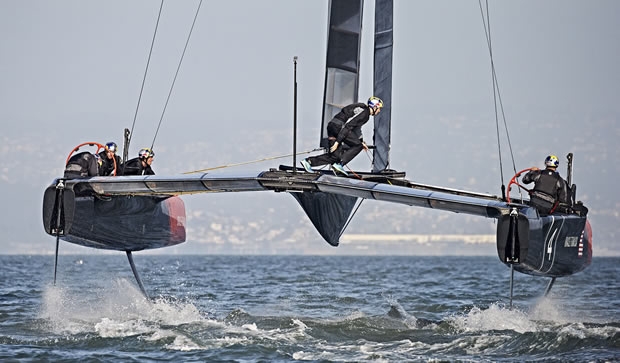
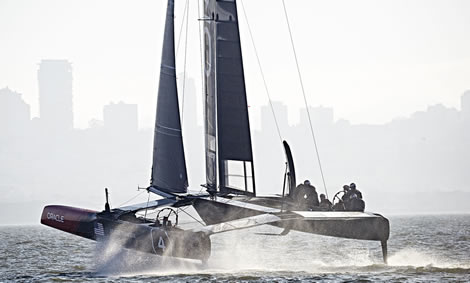
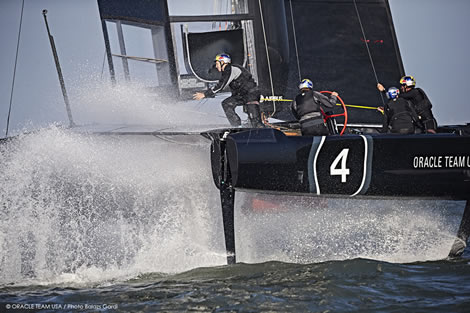
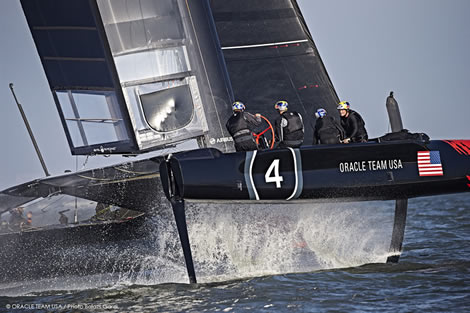
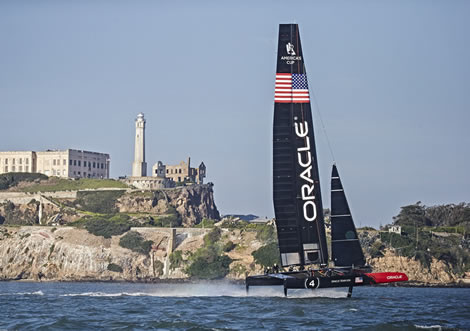







Latest Comments
Add a comment - Members log in